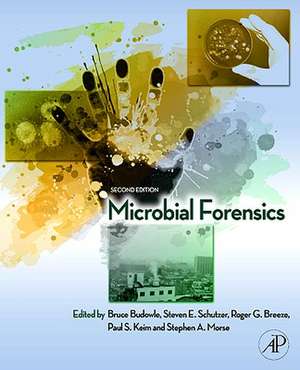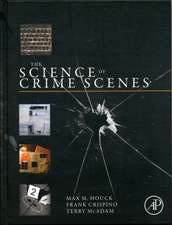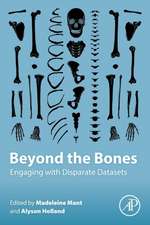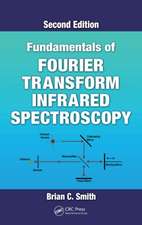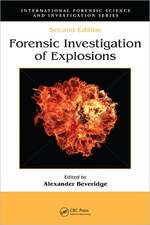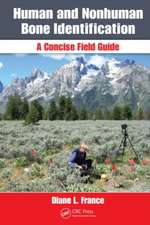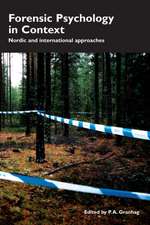Microbial Forensics
Editat de Bruce Budowle, Steven E. Schutzer, Roger G. Breeze, Paul S. Keim, Stephen A. Morseen Limba Engleză Hardback – 27 oct 2010
Microbial Forensics, Second Edition is fully revised and updated and serves as a complete reference of the discipline. It describes the advances, as well as the challenges and opportunities ahead, and will be integral in applying science to help solve future biocrimes.
- A collection of microbiology, virology, toxicology and mycology as it relates to forensics, in one reference
- New and expanded content to include statistical analysis of forensic data and legal admissibility and the standards of evidence, to name a few
- Includes research information and application of that research to crime scene analysis, which will allow practitioners to understand and apply the knowledge to their practice with ease
Preț: 479.83 lei
Preț vechi: 648.41 lei
-26% Nou
Puncte Express: 720
Preț estimativ în valută:
91.83€ • 95.51$ • 75.81£
91.83€ • 95.51$ • 75.81£
Carte tipărită la comandă
Livrare economică 07-21 aprilie
Preluare comenzi: 021 569.72.76
Specificații
ISBN-13: 9780123820068
ISBN-10: 0123820065
Pagini: 744
Dimensiuni: 191 x 235 x 33 mm
Greutate: 1.44 kg
Ediția:2
Editura: ELSEVIER SCIENCE
ISBN-10: 0123820065
Pagini: 744
Dimensiuni: 191 x 235 x 33 mm
Greutate: 1.44 kg
Ediția:2
Editura: ELSEVIER SCIENCE
Public țintă
Primary: Forensic scientists, researchers and practitioners in microbial forensics laboratoriesSecondary: Microbiology researchers; attorneys, law enforcement and intelligence communities; post-graduate students of forensic science and the international community involved with Biological Weapons Treaties
Cuprins
Introduction - The Rapidly Evolving Discipline of Microbial Forensics;
PART 1 INVESTIGATIVE GENETICS - A. Criminal;
The Kameido anthrax incident: A microbial forensics case study; Microbial Forensic Investigation of the Anthrax-Letter Attacks;
B. Civilian;
Foodborne Outbreaks: What’s New, What’s Not, and Where Do We Go from Here?; Genotype and Geography; the global distribution of bovine tuberculosis; Tracing meat products through production and distribution chain from farm to consumer; Microbial Forensics of RNA Viruses: Foot-and-Mouth Disease Virus; Forensic Plant Pathology;
PART 2 EMERGING INFECTIONS
Influenza Forensics; Keeping Track of Viruses; Microbial Forensic Analysis of Trace and Unculturable Specimens; Molecular Microbial Surveillance and Discovery in Bioforensics;
PART 3 BIOSECURITY
Assessment of the Threat; The Select Agent Regulations; Biosurety in the Post-9/11 Era; Forensic public health: epidemiologic & microbiologic investigations for biosecurity
PART 4 SUBJECT AREAS
Forensic Analysis in Bacterial Pathogens; Rickettsia and Coxiella; Forensics and Epidemiology of Fungal Pathogens; Ricin Forensics: Comparisons to Microbial Forensics; Forensic Aspects of Biologic Toxins;
PART 5 METHODS
The Use of Host Factors in Microbial Forensics; Collection and Preservation of Microbial Forensic Samples; Sampling for Microbial Forensic Investigations; Toxin Analysis Using Mass Spectrometry; Electron Beam-Based Methods for Bioforensic Investigations; Proteomics Development and Application for Bioforensics; High-throughput Sequencing; Genomics; The Design of Genomic Signatures for Pathogen Identification and Characterization; Non-Biological Measurements on Biological Agents; Inferential Validation and Evidence Interpretation; Microbial Forensic Investigations in the Context of Bacterial Population Genetics; Population Genetic Considerations in Statistical Interpretation of Microbial Forensic Data; Biorepositories and their Foundations – Microbial Forensic Considerations;
PART 6 NATIONAL LEVEL CAPABILITIES
A U.S. Research Strategy for Microbial Forensics: From Genesis to Implementation; The National Bioforensic Analysis Center; Microbial Forensics in Australia - The Australian Federal Police Perspective; Validation of Microbial Forensics in the Scientific, Legal and Policy Contexts;
PART 7 MICROBIAL FORENSICS CURRICULA AND TRAINING
Microbial Forensics: Educating the Workforce and the Community; So You Really Want to be an Expert Witness? A Primer for the Occasional Expert Witness; Conclusion – Microbial Forensics, What Next?
PART 1 INVESTIGATIVE GENETICS - A. Criminal;
The Kameido anthrax incident: A microbial forensics case study; Microbial Forensic Investigation of the Anthrax-Letter Attacks;
B. Civilian;
Foodborne Outbreaks: What’s New, What’s Not, and Where Do We Go from Here?; Genotype and Geography; the global distribution of bovine tuberculosis; Tracing meat products through production and distribution chain from farm to consumer; Microbial Forensics of RNA Viruses: Foot-and-Mouth Disease Virus; Forensic Plant Pathology;
PART 2 EMERGING INFECTIONS
Influenza Forensics; Keeping Track of Viruses; Microbial Forensic Analysis of Trace and Unculturable Specimens; Molecular Microbial Surveillance and Discovery in Bioforensics;
PART 3 BIOSECURITY
Assessment of the Threat; The Select Agent Regulations; Biosurety in the Post-9/11 Era; Forensic public health: epidemiologic & microbiologic investigations for biosecurity
PART 4 SUBJECT AREAS
Forensic Analysis in Bacterial Pathogens; Rickettsia and Coxiella; Forensics and Epidemiology of Fungal Pathogens; Ricin Forensics: Comparisons to Microbial Forensics; Forensic Aspects of Biologic Toxins;
PART 5 METHODS
The Use of Host Factors in Microbial Forensics; Collection and Preservation of Microbial Forensic Samples; Sampling for Microbial Forensic Investigations; Toxin Analysis Using Mass Spectrometry; Electron Beam-Based Methods for Bioforensic Investigations; Proteomics Development and Application for Bioforensics; High-throughput Sequencing; Genomics; The Design of Genomic Signatures for Pathogen Identification and Characterization; Non-Biological Measurements on Biological Agents; Inferential Validation and Evidence Interpretation; Microbial Forensic Investigations in the Context of Bacterial Population Genetics; Population Genetic Considerations in Statistical Interpretation of Microbial Forensic Data; Biorepositories and their Foundations – Microbial Forensic Considerations;
PART 6 NATIONAL LEVEL CAPABILITIES
A U.S. Research Strategy for Microbial Forensics: From Genesis to Implementation; The National Bioforensic Analysis Center; Microbial Forensics in Australia - The Australian Federal Police Perspective; Validation of Microbial Forensics in the Scientific, Legal and Policy Contexts;
PART 7 MICROBIAL FORENSICS CURRICULA AND TRAINING
Microbial Forensics: Educating the Workforce and the Community; So You Really Want to be an Expert Witness? A Primer for the Occasional Expert Witness; Conclusion – Microbial Forensics, What Next?
Recenzii
"The second edition of Microbial Forensics provides a comprehensive overview of this emerging field, highlighting how epidemiological investigations must be conducted to provide evidence that can be used in legal proceedings where attribution is key. The book provides valuable insights into investigations of prior attempts to spread disease intentionally and needed guidance for investigating future incidents. This book will be of great value to microbiologists and epidemiologists as well as to law enforcement officials for bringing emerging molecular methodologies into investigations of disease outbreaks, especially those that are intentional criminal and terrorist acts." --Dr. Ronald M. Atlas, University of Louisville, KY, USA
